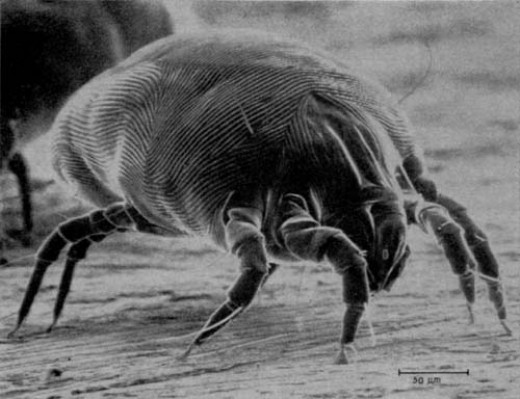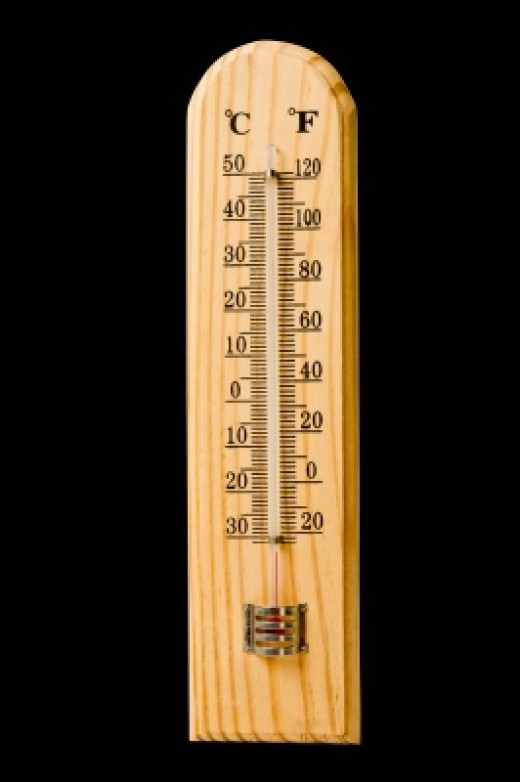Author

 For further details log on website :
For further details log on website :
https://dengarden.com/pest-control/How-to-Get-Rid-of-Dust-Mites-in-Your-House
Get Rid of House Dust Mites With These 10 Suggestions
Dust mites are the scourge of allergy sufferers everywhere. There are literally millions of them living and feeding inside your bed, carpets, soft furnishings, clothes and anywhere where dust tends to accumulate. Dust mites are tenacious little critters that breed prolifically: getting rid of them is no easy feat.
Over the course of its life, a dust mite can produce up to 200 times its own body weight in waste produce. This is bad news for us humans because dust mite debris can trigger a range of health complaints and allergic reactions such as breathing difficulties, coughing, nasal congestion, itching and watery eyes. They can also have a detrimental effect on your sleep, causing you to wake several times during the night.
Although completely eliminating dusts mites from your home is virtually impossible, there are several precautions you can take to drastically reduce their numbers and neutralize their threat. Let's take a look at ten of the best ways to get rid of dust mites in your house.
# 1. Wash Bedding Regularly
A bed is a warm, dark and humid place making it a perfect habitat for dust mites to prosper. Additionally, the flakes of dead skin which humans shed during the night become ideal food sources for these little pests. It's not a pretty thought.
Fortunately, dust mites don't take too kindly to hot temperatures. Putting your bed sheets through a 140°F (60°C) wash is usually enough to kill them and remove their fecal matter and skin particles. If you have a tumble dryer, put the sheets through a spin-cycle until they are fully dry. The heat from the dryer should take care of any mites that survived the wash. Try to do this on a weekly basis to keep dust mite population to a minimum.

Eeek! It's a good job we can't actually see dust mites.
# 2. Use an Anti-Allergy Mattress and Mattress Cover
Estimates as to how many dust mites actually live in an average mattress vary wildly from 10'000 to over a million. Whatever the exact figure, one thing is certain: even the cleanest of mattresses are teeming with these microscopic vermin. Sadly, it just isn't possible to make a mattress completely dust mite free. But you can take a few measures to ensure that mite populations are kept low, and their feces and decaying body matter are kept away from your body.
If you don't have one already, consider investing in a hypoallergenic mattress or, for a cheaper alternative, get yourself an anti-allergen mattress protector. A mattress protector acts as a barrier between yourself and the critters in the mattress, preventing your body moisture and skin from dropping into their feeding zone; likewise, the mattress protector stops dust mite allergens from infiltrating your sleeping zone.
# 3. Don't Make Your Bed in the Morning
Here's some great news for anyone who hates making their bed first thing in the morning: don't bother! Instead, give your duvet and bed cover a good airing. This gives the moisture excreted from our bodies time to dry.
Dust mites love moisture. They can't drink water in the normal sense but instead they absorb it through the air. By reducing moisture and humidity within the bed, we're making life difficult for them.
# 4. Get Rid of Feather Pillows and Duvets
Considering that you'll probably spend eight hours each day with your face resting on it, your pillow needs to be soft, comfortable and free of allergens. Traditional feather pillows aren't really suited to the task. Not only are they lumpy and difficult to wash but they also provide an ideal home for dust mites. The same is true of duvets.
Try using hypoallergenic synthetic pillows and duvets instead. They provide a less cosy environment for dust mites and you can blast them through the wash at 140°F (60°C) which is the magic temperature for killing the mites.
To really help drive those mites out of your bed, buy a hypoallergenic pillow and duvet cover as well.
***Update***
There is a growing body of scientific evidence challenging traditional beliefs about the relationship between dust mites and feather/synthetic pillows and duvets.
# 5. Replace Carpets with Hard Flooring
Like beds and soft furnishings, carpets are a paradise for dust mites. Carpets trap dead skin and pet dander which the mites feed on.
Rip up the carpets in your bedroom (or ideally, the whole house) and replace them with hard flooring such as linoleum, laminate or tile. This is one of the most effective ways of instantly getting rid of dust mites. Hard flooring eliminates their most fertile breeding ground.
If getting rid of your carpets is impractical or too costly, try to vacuum regularly - at least two or three times each week. If you suffer from dust allergies, wear a dust mask and open the windows when you vacuum, or ask someone else to do it. Using a vacuum with a High-Efficiency Particulate Arresting (HEPA) filter might help reduce your exposure to some airborne allergens when vacuuming, however, HEPA filters have been proven to be less effective against dust mites.
You can purchase carpet sprays and treatments that get rid of dust mites and other carpet allergens. But in the long term, it might actually work out cheaper to install some hard flooring and throw your mite-infested carpets in the trash.

Source
# 6. Control Temperature and Humidity
Dust mites love living in an environment where the temperature is between 75°F and 80°F (24°C and 27°C) and the relative humidity is around 70% to 80%. Anything outside this range won't necessarily kill them but will push them outside their comfort zone and slow down their breeding.
Set the temperature inside your house to no higher than 70°F (21°C). This is considered a normal and healthy environment for a human, but is very slightly below optimal for a house dust mite. If you can comfortably live at a few degrees below this temperature, you'll not only save money on heating costs but you'll make life tougher for your unwanted house guests.
Another way to control dust mite population through indoor climate control is to monitor the humidity in your house. Unfortunately, dust mites live comfortably in a temperature similar to humans but they actually prefer a higher humidity. Anything lower than 70% relative humidity reduces their reproductive rate. Try to keep relative humidity in your bedroom and home to less than 50%.
You can test humidity in the home with an electronic humidity monitor. If you find that relative humidity levels are greater than 50%, try to get air circulating through your house by using vents and fans and by opening windows often. If this doesn't work, or is too inconvenient, It's also possible to control humidity with air conditioning units and dehumidifiers.
# 7. Keep Pets Out of the Bedroom
Dust mites love pet dander. Make pets sleep outside or in the garage if possible and limit their indoor freedom to one or two rooms. Make an extra effort to keep pets out of the bedroom.
# 8. Get Rid of Curtains, Cushions and Soft Furnishings
Curtains and soft furnishings are a dust mite's paradise. Fabric traps the dust and mositure which they feed on and shields them from potential threats. Each time you drag open the curtains or sit down on a fabric couch, dust mite debris is discharged into the air. If you suffer from dust mite allergies then this is a scenario to avoid.
Get tough with dust mites by:
- Replacing curtains with easy-to-clean blinds.
- Throwing away fabric cushions or exchanging them for leather/artificial leather cushions.
- Trading fabric couches and arm chairs for leather/artificial leather versions.
Perhaps you don't want to part with your soft furnishings? Then you'll need a steam cleaner (see tip # 9.).
Cuddly toys are another dust mite trap. Short of triggering a tantrum in your child, try to reduce cuddly toys on display in your house. If that beloved teddy bear really has to stay, give it a regular airing. Every so often, stick it in a plastic bag and place in the freezer for 24 hours. This will kill the dust mites.
# 9. Use a Steam Cleaner
Steam cleaners are a great way to clean items and objects that aren't suitable for a washing machine. You can use them on carpets, curtains, cushions, kitchen/bathroom surfaces and a thousand other places. The steam kills bacteria, dissolves dirt and yes, kills dust mites.
# 10. Clean Regularly
This might seem like an obvious tip but you should never underestimate the power of dust mites to colonize and breed in your home. With the average human shedding enough dead skin each and every day to feed one million of these pesky critters, maintaining a frequent cleaning schedule is vital.
Make a note of all the places in your home where dust tends to accumulate and wipe these areas several times a week with a damp cloth or a microfiber duster - basically something that actually picks up and contains the dust rather than simply moving it about.
What are YOUR most effective methods for getting rid of dust mites?
Please share your suggestions and tips in the comments section below.
https://dengarden.com/pest-control/How-to-Get-Rid-of-Dust-Mites-in-Your-House






No comments:
Post a Comment